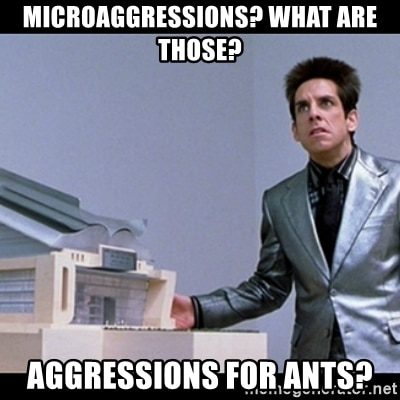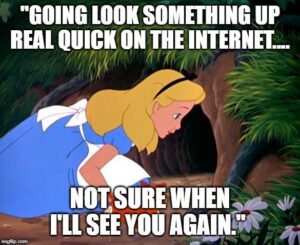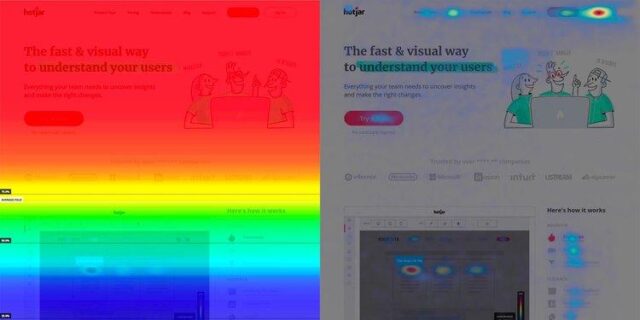
Conversion rate is the number of times someone takes an action on your website. The conversions we optimize are tied to a goal. Generally, this is considered something like orders, a contact form submission, or a product demo.
Conversion rate optimization is the process of making small incremental changes to increase the number of conversions that occur. Most marketers will focus on the conversions mentioned above, sometimes referred to as “macro-conversions.” But do not underestimate the importance of optimizing for micro-conversions.
No, not micro-aggressions, that’s a different animal altogether.

Page Views, Page Visits, and Sessions
Micro-conversions are the smaller actions that website users take on the path to macro-conversions. I was talking to my friend, Cory Van Horn, who heads up the marketing efforts for Visit Montgomery County (the second-best county in Maryland ;-)), about micro-conversions.
We are both on the C&O Canal Trust Communications Committee and we were talking about the number of page views on the Trust website. A page view is when a new page is loaded in a browser.
This is different from a page visit which is when someone visits a page on your website from a URL other than yours. What we were really focused on is sessions.
HubSpot defines a session as…
A session works by grouping together the interactions individual visitors are having with your site. This includes the pages they are viewing, but also when they engage with elements such as CTAs, forms, or events. The time-sensitive element of a session allows you to drill into engagement and traffic on your site. – Marjorie Munroe, HubSpot
What Cory was advocating for was to increase the number of pages a single user visits as well as their time on the website. What I mentioned was the need for optimizing “micro-conversions.”
Why Micro-Conversions Might Matter More than Macro-Conversions
Let’s further define what a micro-conversion looks like. Again, here is HubSpot’s definition…
A micro conversion is any incremental step a user can take to show initial interest in your brand or product. – Caroline Forsey, HubSpot
To go a bit deeper, a micro conversion is any action that a user can take on your website, outside of major macro-conversion events, whereby they are increasing their website engagement, and going deeper down the rabbit hole.

We want people to stick around, right? The more time they spend on your website, the more connected they feel to you and your brand. The more content they devour, especially if it is E-A-T worthy content, the more they trust you and believe that you are there to help them.
Trust builds brand loyalty and increases your macro-conversion rate. Remember, people rarely go to a website and purchase something right away. I was talking to Purna Virji for an upcoming episode of our Wellspring Digital Chat series, about the importance of being there throughout the entire sales funnel.
Whether you call it a sales funnel, buyer journey, or like my buddy Scott Stratten calls it, a sales cloud, it’s unfortunately very common for marketers to ignore about 80-95% of the journey, focusing only on the buying moment.
Moments of Truth and Micro-Conversions
Marketers have been talking about moments of truth for years now. Google talked a while back about the Zero Moment of Truth. Traditionally, you had the first, second, and third moments of truth.
Originally coined by Proctor & Gamble, you know, the people who have half of everything, moments of truth are nothing new in marketing.

Anyway, the original moments of truth are defined as…
- First Moment of Truth: when a customer encounters a product or service.
- Second Moment of Truth: when a customer purchases a product or service, i.e., macro-conversion.
- Third Moment of Truth: when the customer reacts to the product or service publically, either in person or a review or recommendation online.
In 2011, Google talked about the Zero Moment of Truth, the time before a customer encounters a specific product or service but is generally looking for such a product or service. This is the “research” phase. The internet is the vast expanse of millions of zero moments of truth.
The Micro-Moments of Truth
In between the first and second moments of truth is where micro-conversions occur. They’ve already done some research and have encountered your product or service.
These are the often-neglected moments, where the customer is aware of your offering but still isn’t ready to pull the trigger. It’s your job to guide them through these moments of truth by optimizing your micro-conversions.
These moments occur on About pages, blog posts, product pages, case studies, anywhere on your website where they are taking a harder look at you and deciding whether you are the one or not.

Optimizing for Micro-Conversions
Your customer is on a journey. Optimizing for micro-conversions simply means that each page on your website is optimized for action. Think about how often we consider the “next step” when posting on our blogs or writing our About page. It’s rare.
We’re mostly just focused on the content, the now, and not the before or after.
Each page, each element on your website is another step along the path to conversion. Each step should be obvious and easy for them to take. For example, if you are writing a post about how to use one of your products, make it easy and obvious for them to buy that product.
This could be a call-to-action, like a button or a callout box, or simply a link in the post that takes them to the product page. The optimization part comes in the specificity of how this is done.
If you’re reading a blog post and feel like you’re being smacked upside the head with sales offers, they will get annoyed and bail. So, micro-conversion optimization is not simply about making something more obvious, it’s about making the action seem like an obvious next step.
The Two Types of Micro-Conversions
The trick to understanding and optimizing micro-conversions is to understand what the action is and how it fits into the buyer’s journey. Sometimes, the journey they’re taking doesn’t end in a sale, but it can end in a win.
These wins can be things like newsletter signups or sharing your article on social media. No sale but you’ve made a deeper connection with them. These connections often lead to referrals or even sales.
The HubSpot article I mentioned above references two categories of micro-conversions, as defined by Jen Cardello from the Nielsen Norman Group…
- Process Milestones are conversions that represent linear movement toward a primary macro conversion. Monitoring these will help you define the steps where UX improvements are most needed.
- Secondary Actions are not the primary goals of the site, but they are desirable actions that are indicators of potential future macro conversions.
Both are referring to actions taken along a journey. A “user journey” is a concept from the User Experience discipline of software development.
User Experience, User Journey, and Micro-Conversions
User experience is about making the user journey an easy and obvious one. In software, that means that the user can use the software with ease and that the actions they take are intuitive. This takes testing and lots of retooling of the system.
I would even argue that user experience optimization is never truly over. A good development team is monitoring software use and listening to user feedback in an effort to make the system better.
Your website is a system. Your customers are the users of that system. There are many tools you can use to monitor their use. The most common tool is Google Analytics.
Conversion Optimization using Google Analytics and Heat Maps
You can look at things like goal conversions. This is where you’ve defined a specific action as a goal and then you track how many times that goal is achieved. Here is a great video on how to track goal conversions in Google Analytics.
Now you don’t want to track every single click as a goal. Instead, run simple tests. So, if you want to optimize for a micro-conversion in a blog post, set that up as a goal to track.
You can even run A|B tests where you split test two versions of the same page with slightly different calls to action. HubSpot has a great overview on running A|B tests. One of our favorite A|B test tools is Optimizely.
Heatmaps are another useful tool. Use heatmaps to track the actual activity on a page. Here’s an example from heatmap software provider Hotjar of what a heatmap looks like…

The section on the left is covering the scrolling activity (how far down the page someone scrolls). The image on the right is showing click events. If you have a page with multiple calls to action on it, you can see which one works best and maybe delete the ones that do not convert.
You can also cheat and use UTM codes to track click events. Simply create a UTM code and then track those clicks in Google Analytics.
However, you track these conversions, the point here is to improve upon what is working and eliminate or retool what isn’t.
Micro-Conversion Optimization Turns Visitors into Fans and Customers
We could go down all sorts of optimization rabbit holes but that’s not the point of this post. There is no shortage of tutorials on how to track various events, goals, and paths taken in Google Analytics. I’ve linked to some of them above.
My point in this post is to impress upon you the importance of optimizing those micro-conversions we all seem to neglect. Let’s face it, if your content is good and you have a quality website, then the more pages a user visits, the more likely they are to take the big actions.
Make the experience intuitive. Lead them from one post to the next. If they like one product, suggest that they check out a related one. If they check out your team page, make it easy for them to read content by those team members.
Each page is a steppingstone. Keep the stones close and easy to get to and your users will follow the path you lay before them. This is how you make them feel comfortable. This is what makes them trust you.
People recommend and buy from people they trust. So, please, stop ignoring those micro-conversions!
Need help with conversion optimization, let me know!
If you liked this post, you will enjoy this one too. See what I did there?